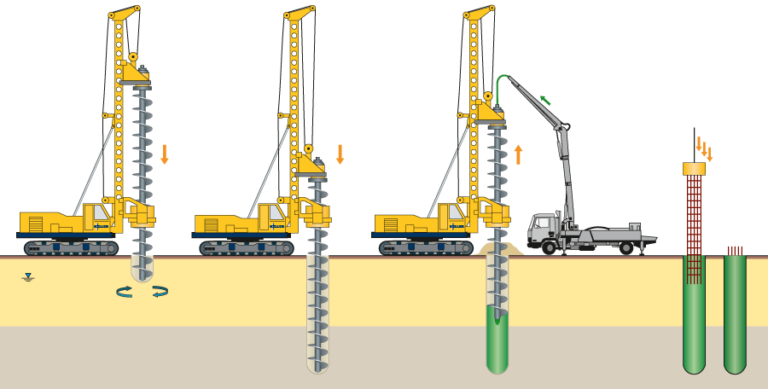Builder’s Secret in Getting Around Home Construction
- Foundation Cost – Save ±Rp. 216,000/m2
The first tip we give is the use of a chicken claw type foundation and a hanging tie beam which will be more efficient than using river stone and tie beam as in the usual foundation construction.
If we reduce river stones, this will save costs more and make it efficient, because we can allocate these costs, for example, to purchase other materials such as lightweight brick, roofing, or other materials.
The recommended conditions for using this type of chicken claw and hanging tie beam foundation, lie in the soil conditions of your house. This type of foundation is suitable if your soil conditions are hard. If your soil is loose or soft, this type of foundation is not recommended, but rather the bore pile foundation which is actually more expensive and far from efficient.
In addition, in soft soil conditions, shingles or bamboo can also be used as a replacement material for piles before placing the footplate or claws.
- Wall Cost – Save ±Rp. 32,000/m2
Wall installation can be circumvented by using lightweight brick material measuring 20cm x 60cm. For the construction of a 2-storey house you can use a 10cm lightweight brick, but for the construction of a 1-storey house you can just use a 7.5cm lightweight brick. If you want to build a house in stages, in this case building a 1-storey house first, then the second floor will follow, it is advisable to use 10cm lightweight brick.
This is much more efficient than if you use red brick material. Installation of red bricks will spend 80 to 90 pieces per m2, while lightweight brick is only enough 12 to 15 pieces per m2, so that from a time perspective the installation of lightweight brick will be much faster than installing red bricks.
In terms of strength, the red bricks will indeed support the carrying capacity of the larger columns to support the load from the floor slabs, so the dimensions of the columns that are installed also don’t need to be too large. Whereas in lightweight brick you have to make the column dimensions large enough, which is approximately 15cm × 40cm for a 2-storey house.
In terms of costs, using lightweight brick will be more efficient because you only need to make a few columns with large dimensions, compared to making lots of columns for wall installation using red brick material.
- Finishing Cost – Save ±Rp. 21.640/m2
Plastering and coating can be circumvented by using dry mix or mortar. The next step after installing the wall using lightweight brick or red brick materials, you simply cover it with sufficient dry mix or mortar with a thickness of only 1.5 cm, compared to the conventional method using cement and sand materials with a thickness of 2 cm to 3 cm. It can also provide efficiency in reducing residue or waste material.
Using dry mix or mortar can also make it easier for you in the painting step, because this material is lighter in color compared to plaster and mortar using cement and sand, so that you don’t need to do the primer over and over again.
- Concrete Floor Slab – Save ±Rp. 30.000/m2
The use of composite metal deck will minimize the cost of constructing floor slabs or not concrete. In terms of time, if the conventional method uses plywood and woven iron, this will take longer than using composite metal deck. In addition, more residue or residual material produced by conventional methods will also be wasted more.
The use of composite metal deck and wire mesh will save work on labor wages, because it requires a much faster time. Using composite metal deck material will take 4 working days, if you multiply it by 5 people per day with a unit price of Rp. 610,000/people per day, it will save Rp. 2,440,000. If this cost is allocated to buy cement with a unit price of Rp. 58,000, you will get 42 sacks of cement.
In addition, the use of composite metal deck material will produce better quality or quality, because the bending strength of this material is more than conventional methods.
Source: youtube/propertree











